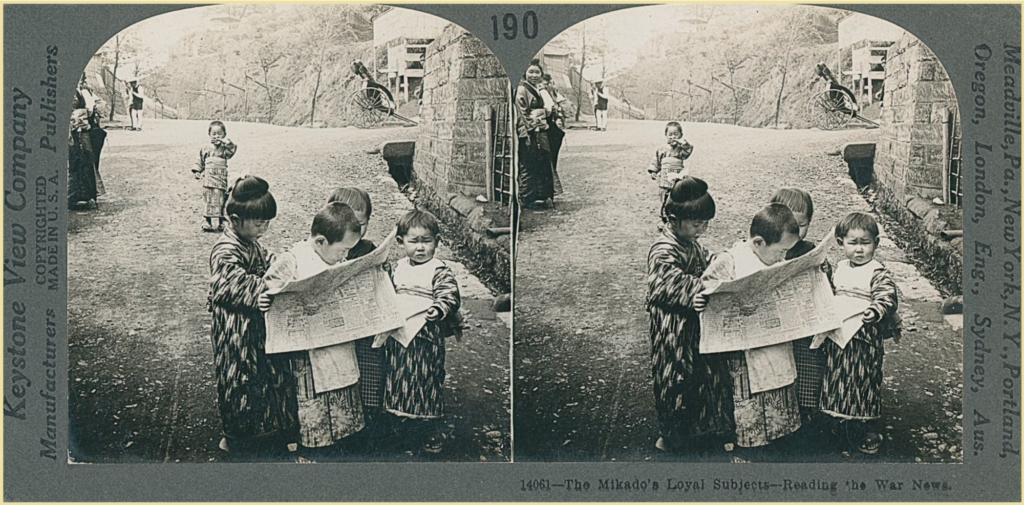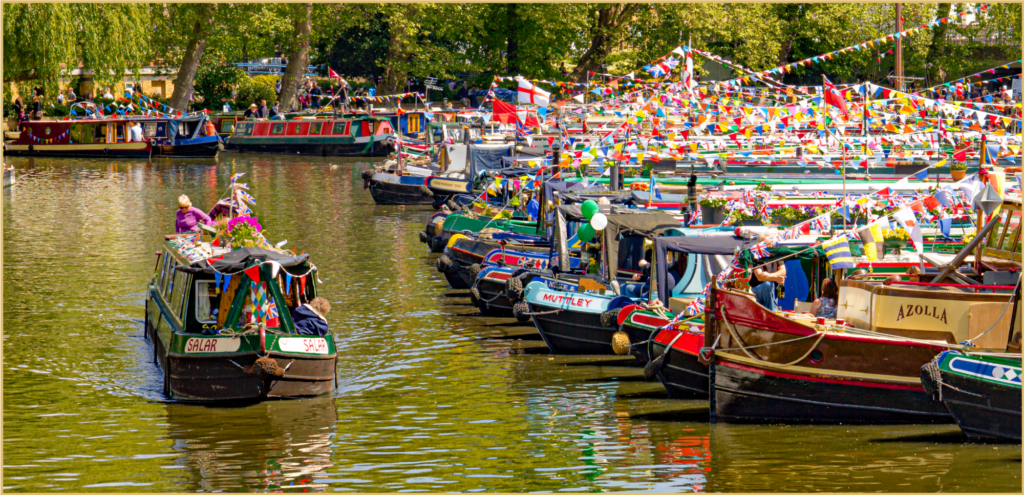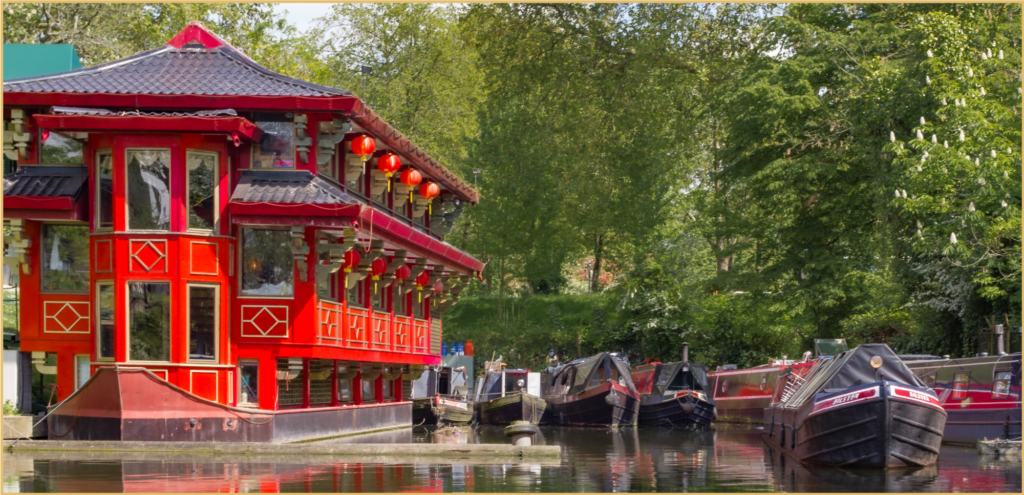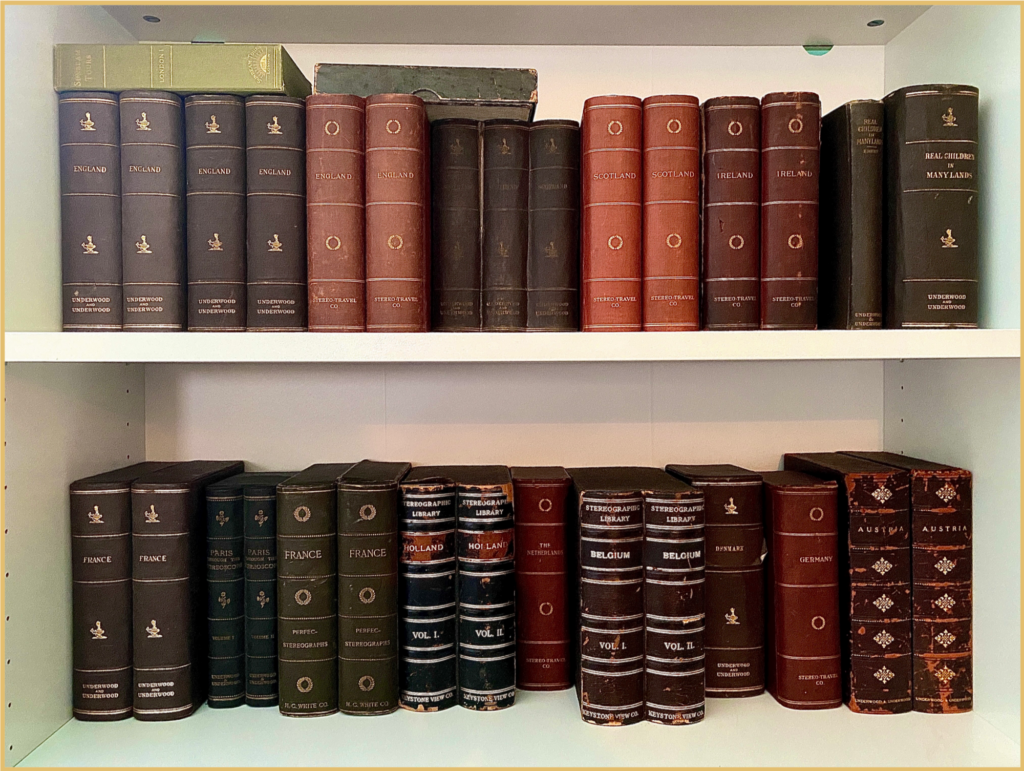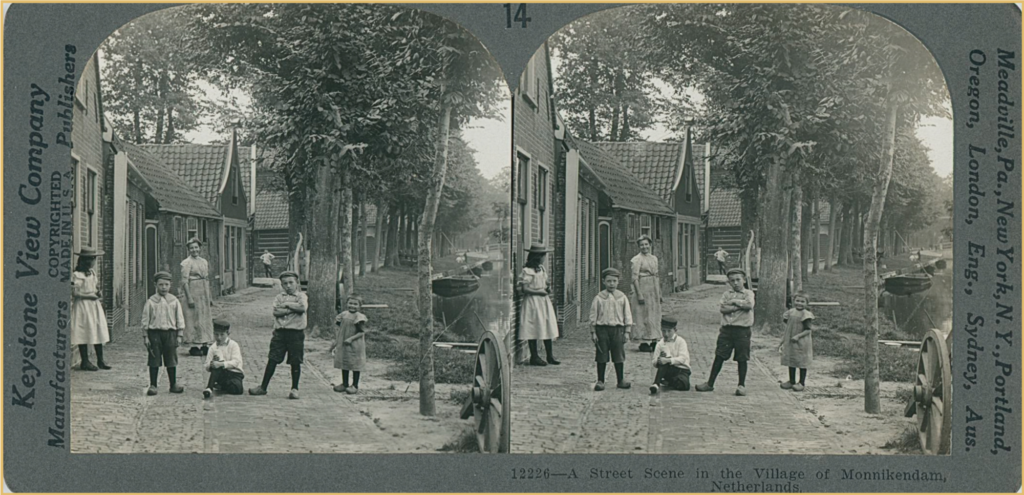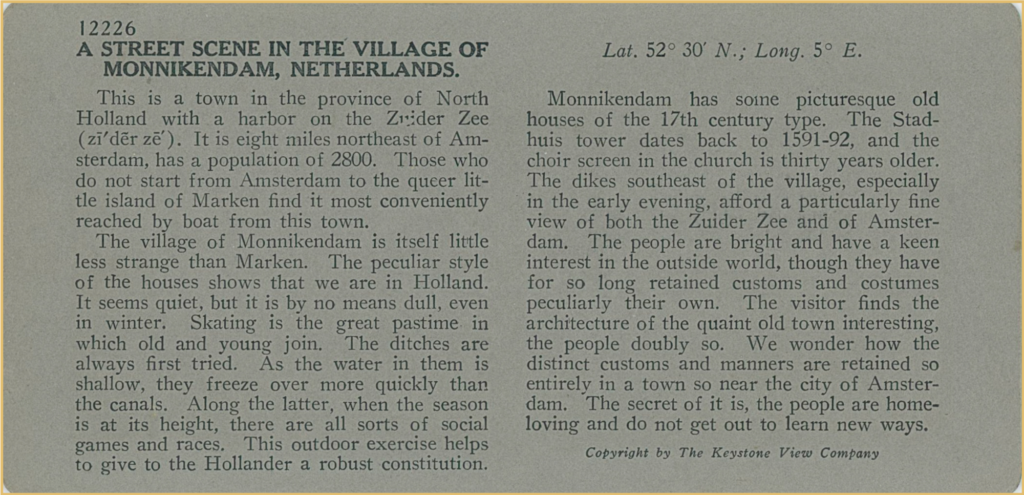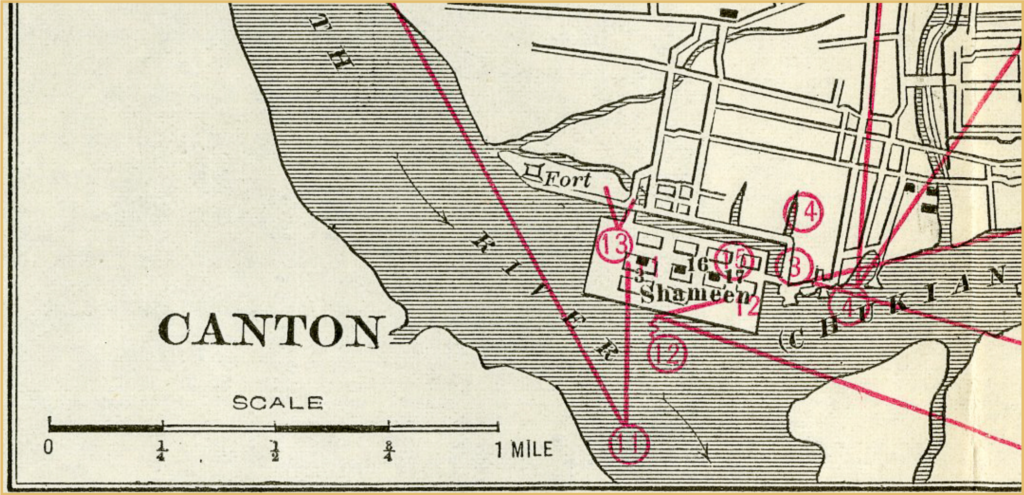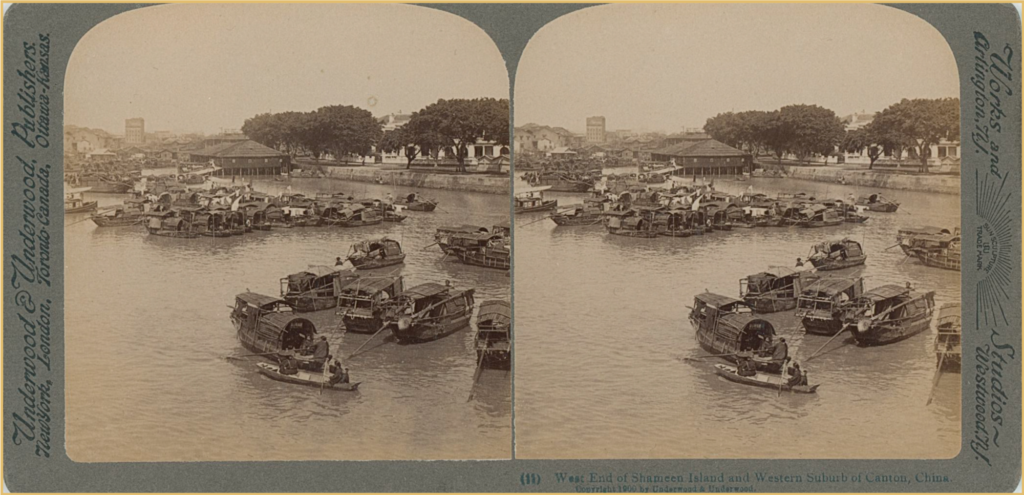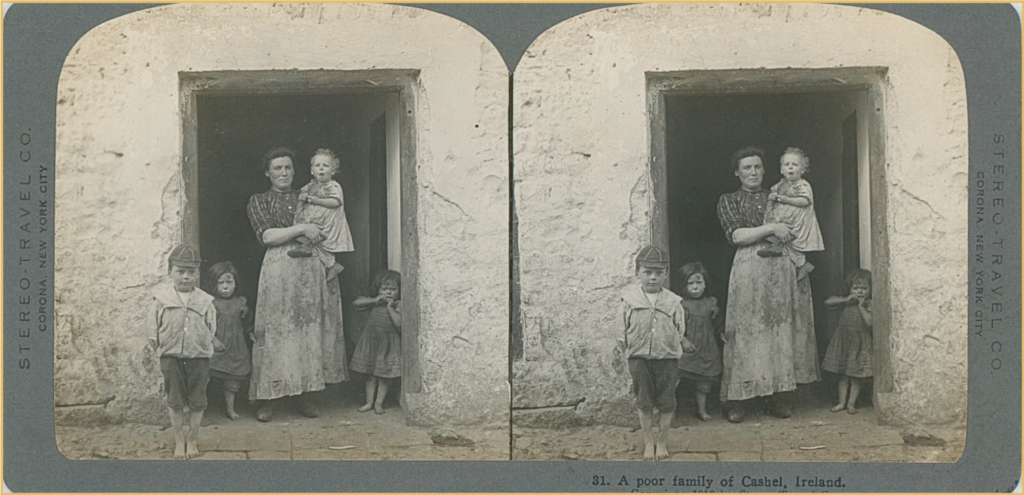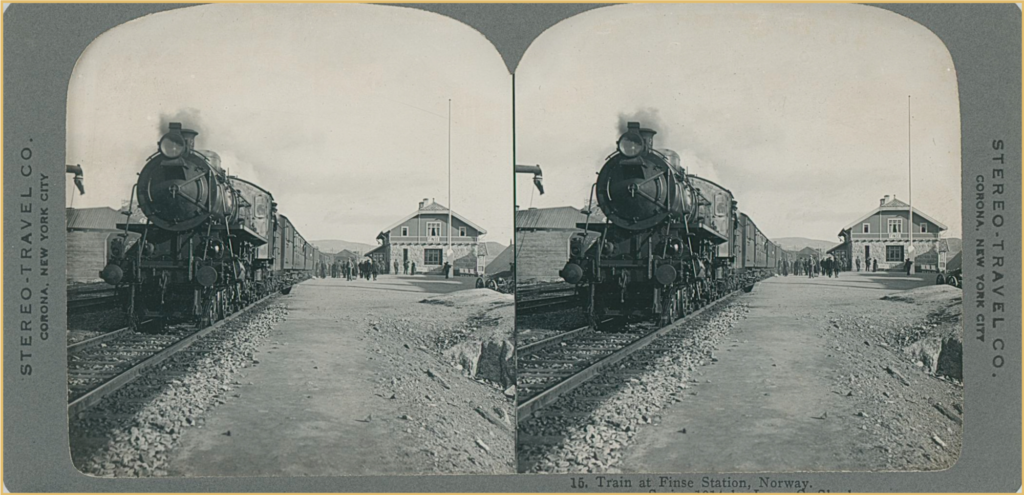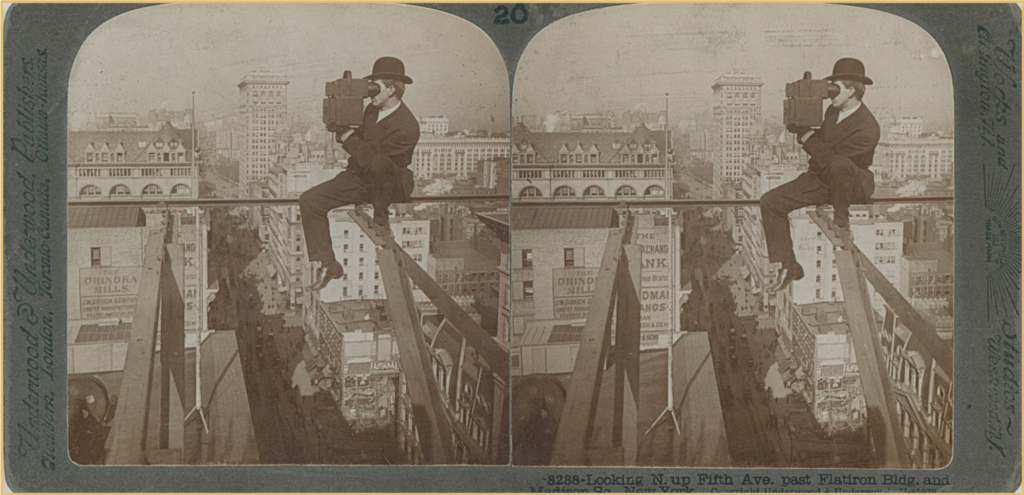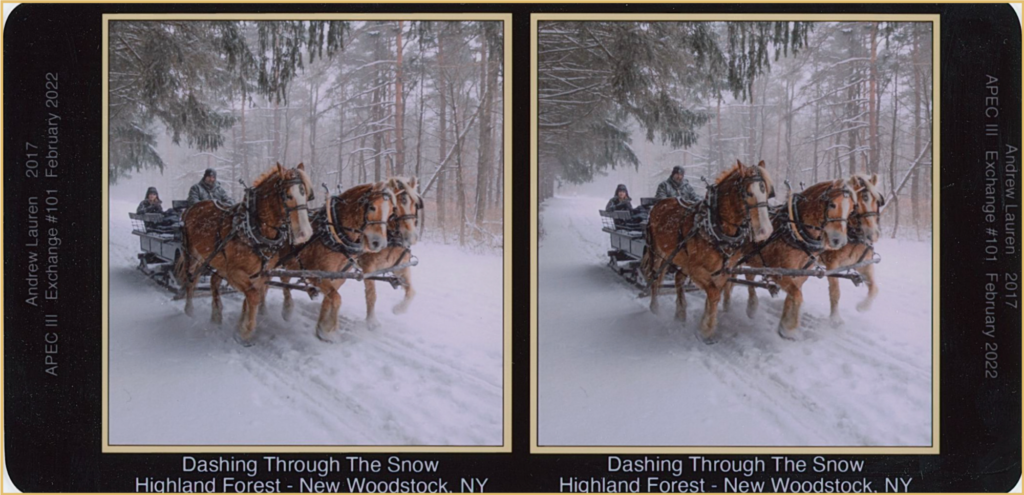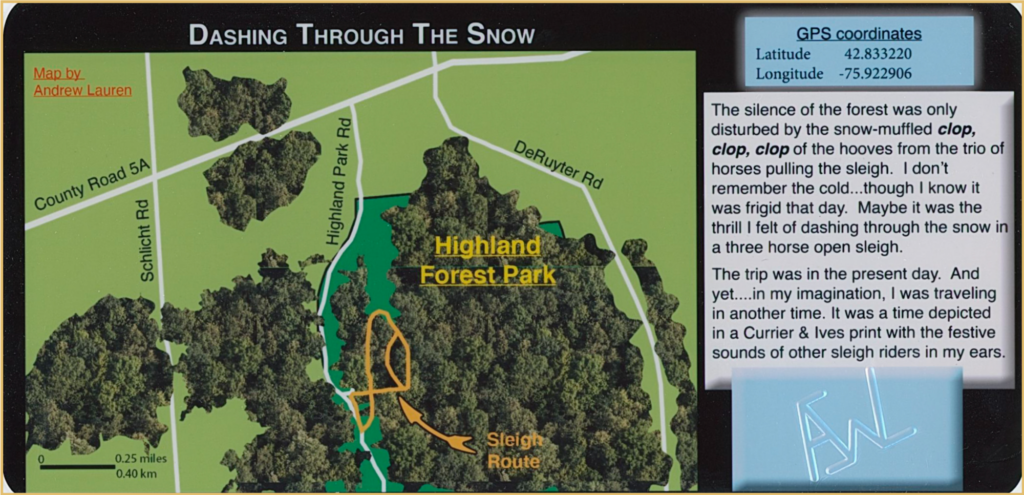My Stereoview Box Set Collection and 3D Photography
written for the stereosite by Andrew Lauren, USA
Introduction
My stereophotography and stereoview collection are two sides of the same coin for me and have a common origin story. Travel back with me to May 2014 — London. A chance encounter on a canal boat. A question asked. An answer given. My life… transformed.
I had boarded a canal boat in Little Venice, not far from the Paddington train station. The area is crowded and full of cheer. It is the annual Canal Cavalcade. Little do I realize that during this short boat trip I will be transformed from a 2D photographer to a 3D one. On the boat I saw another photographer taking pictures too but with what looked like a pair of binoculars attached to his camera. Curious, I asked him what it was. He said he was shooting 3D.
I immediately realized that creating my own 3D images would give a “being there” immersiveness to my photographs and be easy to share with others. As I began learning this new photographic skill I also researched what was done in the past. It was then that I began to discover that the biggest stereoview companies had created box sets in addition to individual cards.
Brief history of box sets
The box sets were an innovation of the Underwood & Underwood Company beginning around 1900 and were a radical departure from what had been done previously. Instead of selling cards individually or as part of a genre series they sold groups of images together that were contained in a box that resembled a book on a shelf.
The images and textual descriptions at times contain cultural biases and prejudices that today sound very offensive. But they also provide cultural insights in their own right about the photographers and the publishers of these images. I often wonder if the subjects of these photos would agree with how their story was getting told?
Some of these sets also had a companion book that provided even more detail about each image in the set. For me they read like I am there on that trip too. My tour guide explains what I am seeing with each image and points out things of interest I might not have first noticed. Specific aspects of the culture are highlighted such as clothing or aspects of occupations and even songs. Things that are outside of the view of the stereocard are also pointed out.
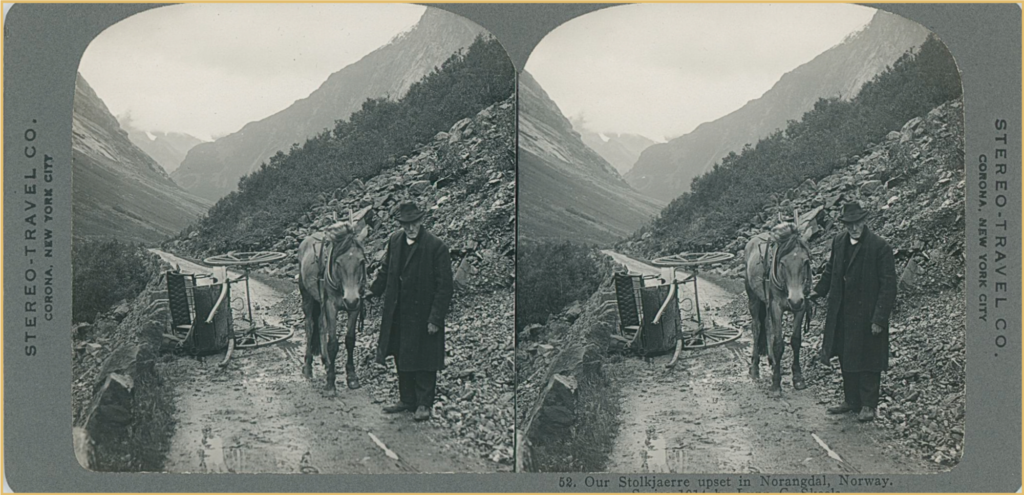
Just by looking at the location where each image in the set was taken the viewer can map out the photographer’s route. What stands out for me when I’ve done that was how arduous and how much time was spent on these journeys to create the images in some of these box sets. In a time before traveling by plane or car existed the photographers had to rely on ships to arrive at their destinations and for local travel as well. Where trains existed they were used. Presumably, horses or other animal transport with wagons was used for overland travel. The photographer had to transport along these routes heavy cameras and the fragile and precious glass plates used for capturing the images of these remote areas.
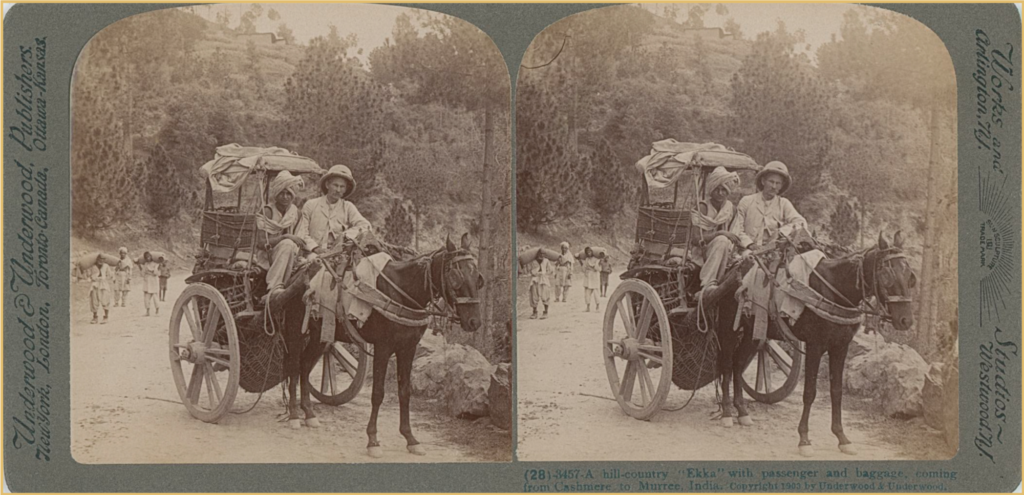
James Ricalton, shown in this image, was a primary photographer for Underwood and Underwood. During his 20 years working for them he traveled completely around the world 6 times with no fewer than 43 crossings of the Atlantic and Pacific Oceans. He took tens of thousands of images for the company depicting notable places, the local population and their customs, and front-line views of war. He often took the least traveled routes identifying himself as a traveller and not a tourist.
Before working for them Ricalton had already traveled extensively including an 800 mile solo walk through northern Russia in 1886. His travels came to the attention of Thomas Edison, who hired him in 1888 to travel around the world to help with his research to create an incandescent lamp.
In 1891, at the age of 47, Ricalton began a new career as a full-time traveling photographer for Underwood and Underwood which included being a war correspondent on the front lines during the Boer War,…
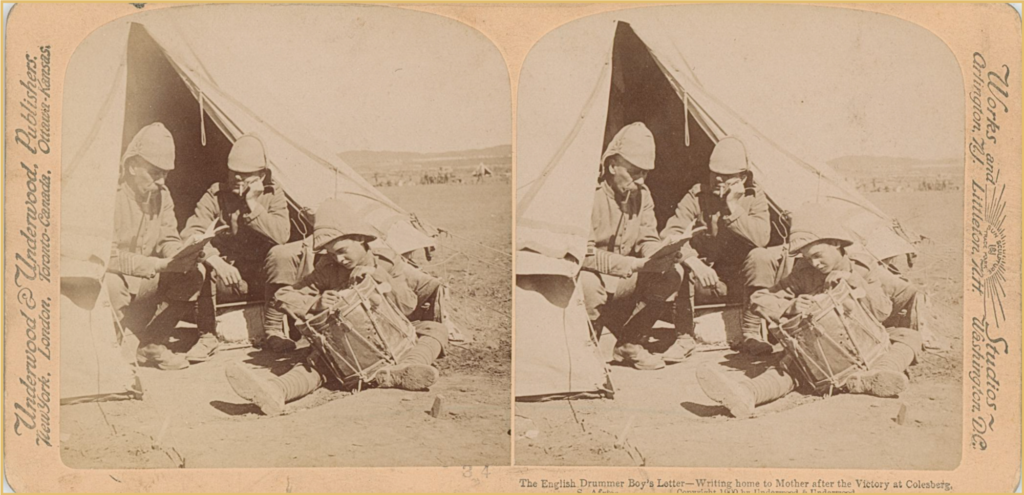
…the Spanish-American War, where this image shows a real battle scene and is not a re-creation of one,…
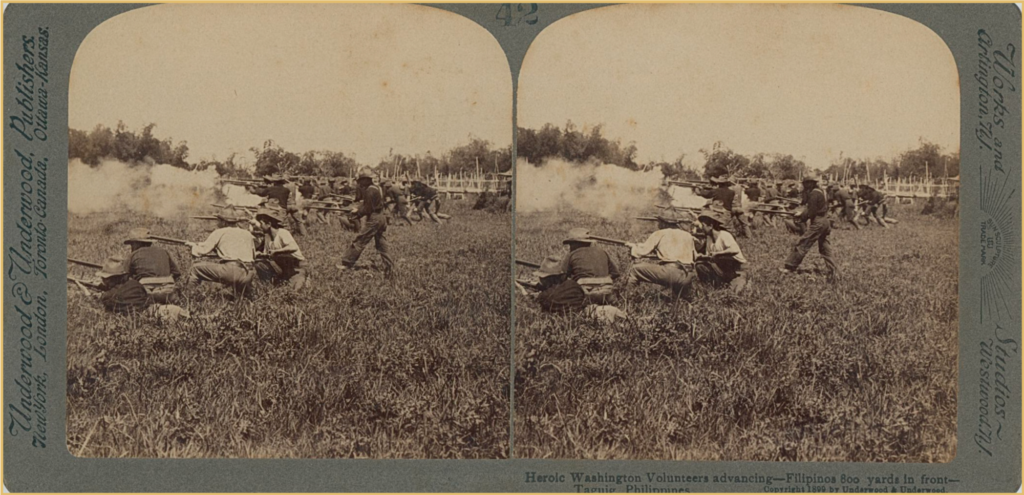
…the Boxer Uprising in China, where this image seems designed to produce outrage at atrocities committed by the Boxers against children…
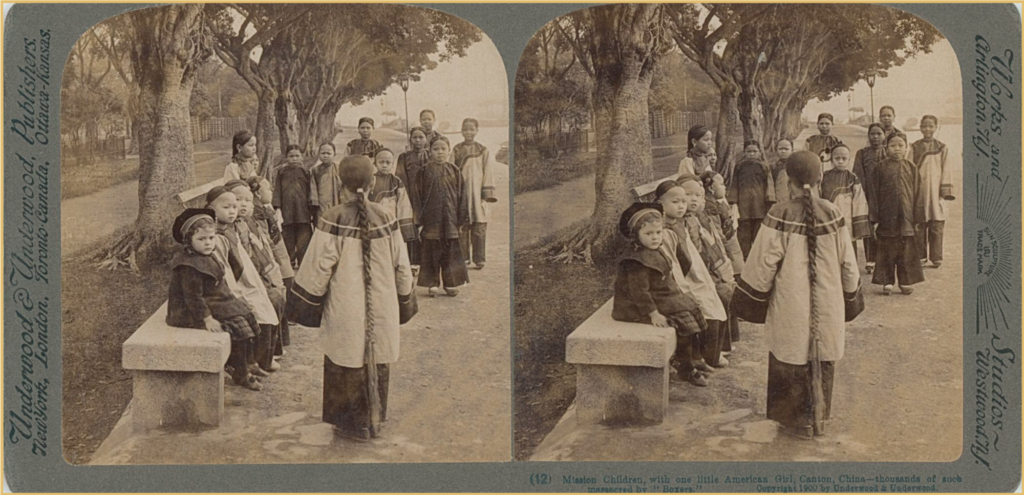
…and the Russian-Japanese War. Ricalton became world famous for his stereoimage of the firing of a Japanese artillery cannon and capturing its projectile in flight from the weapon. He did this even as his position was under heavy fire from Russian artillery.
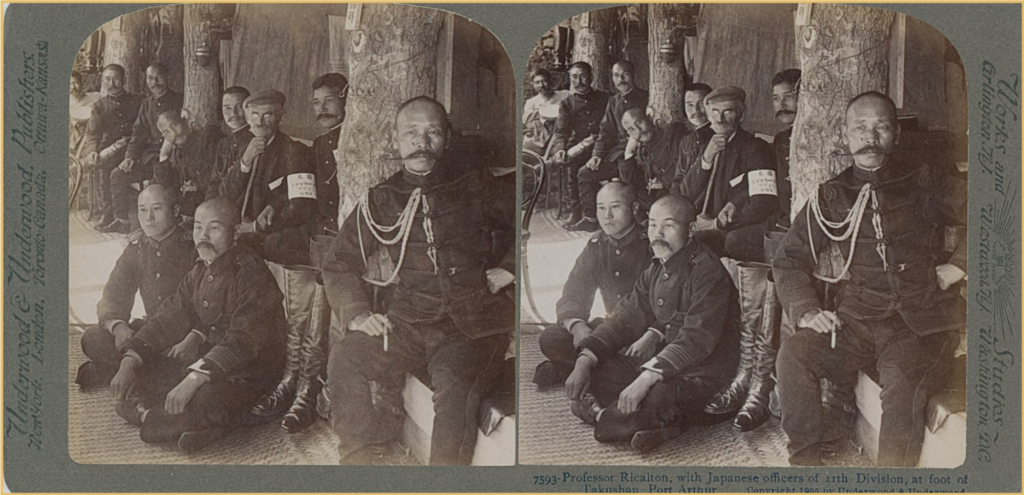
Sometimes the companion books for the box sets contained maps utilizing a system developed specifically for them. The location of where each photograph was taken was provided as well as the direction the photographer was facing. The circled 11 at the bottom shows from where Image 11 was taken. The area between the two lines, extending from it, shows the scene captured on the card.
The scale of production by Underwood & Underwood was tremendous. By 1901 they were publishing 25,000 stereoviews per day which translates to more than 7 million a year. The sets were sold door to door by salesmen.
The success of Underwood and Underwood with their box sets resulted in other publishers of stereoviews starting to create their own box sets. However, by 1915 the Keystone View Company had bought out most of these competitors. When Underwood & Underwood sold their negatives to Keystone between 1921 and 1923 Keystone was left as essentially the only major publisher of stereoviews in the world.
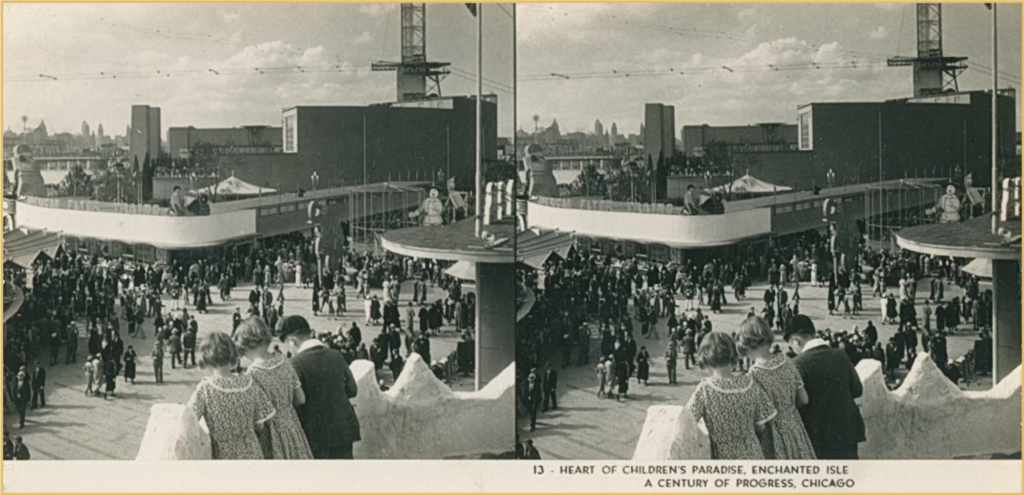
In 1933 Keystone began producing what were called “Keystone Junior” sets. Instead of having 2 photo images affixed to a thick curved card these cards were smaller sized photo prints with the sets containing 25 views.
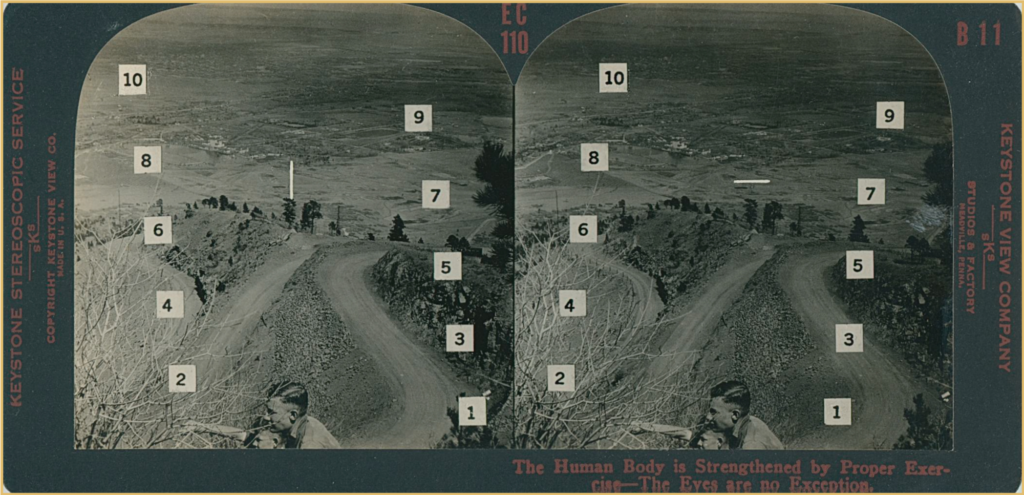
Keystone ended its regular production of stereocards in 1939 though it continued to produce optometry-related sets under the name “Keystone Eye Comfort Series.” These sets were prescribed by doctors for patients who were having difficulty with the coordination of their two eyes working together interfering with their ability to read and other close up work. They provided different exercises to restore the ability of the eyes to coordinate. This card is from their Beta Unit. I also have the Alpha, Gamma, Delta and Epsilon series and the stereoscope made for these exercises.
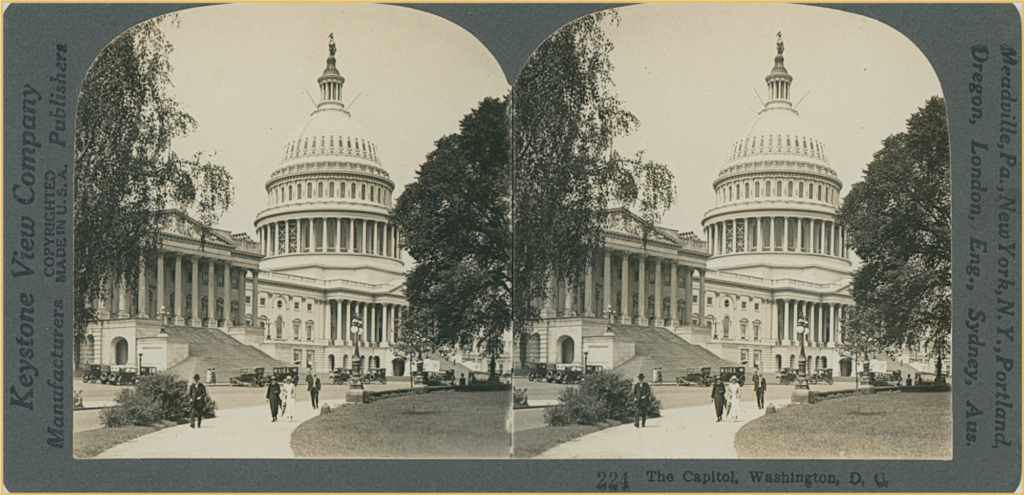
I have box sets created by each of the major stereoview companies of the time: that is, Underwood & Underwood, Keystone, HC White and the Stereo-Travel Company. Each set varies in size. My largest has 100 cards. But, Keystone created even larger collections for its Tour of the World set with the most common version having 600 cards and the largest having 1200 cards. I have the smallest version with 72 cards.
Some box sets were updated with new images to replace old images with better ones, to expand the geographic scope of a box set or to keep them current. This one shows President Theodore Roosevelt and is Card 11 of the United States box set.
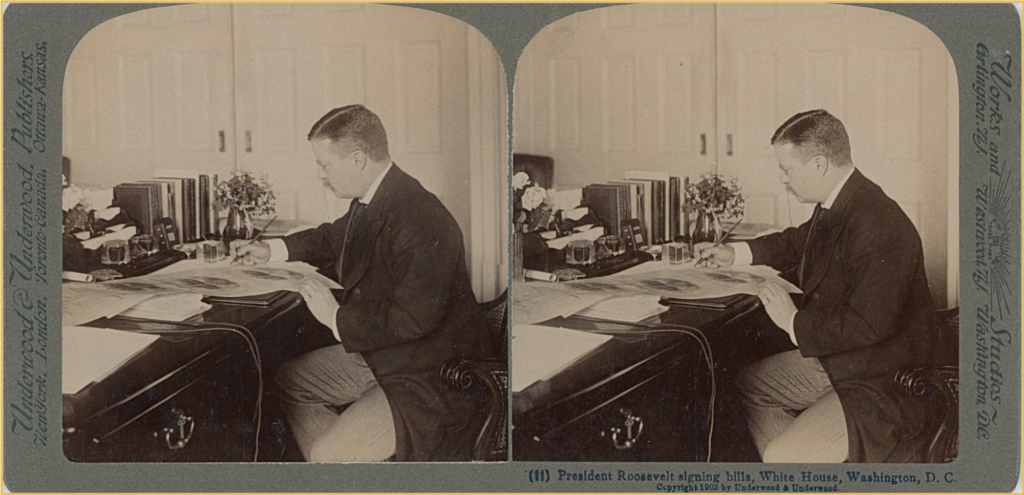
Card 11 was updated when William Howard Taft became the next United States president.
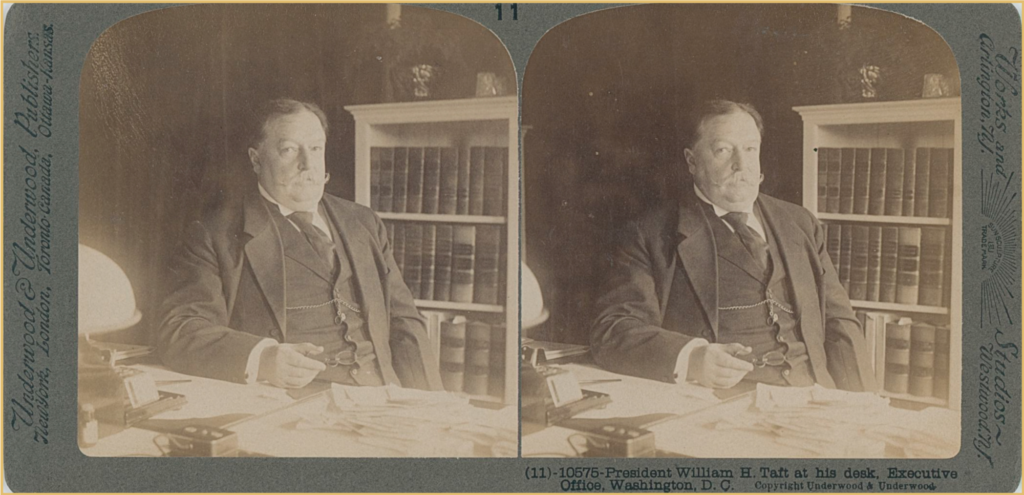
Continents and countries
Some of the box sets in my collection cover entire continents like:
South America,
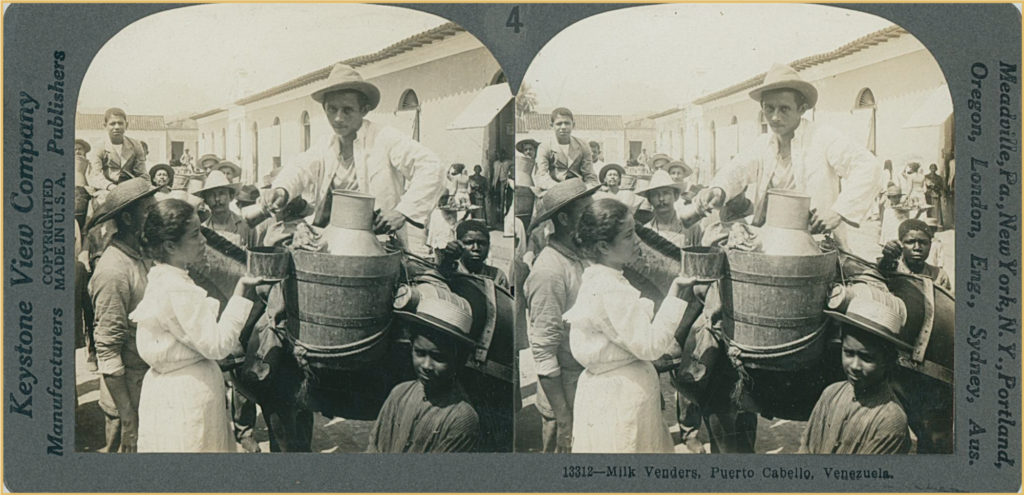
Autralia,
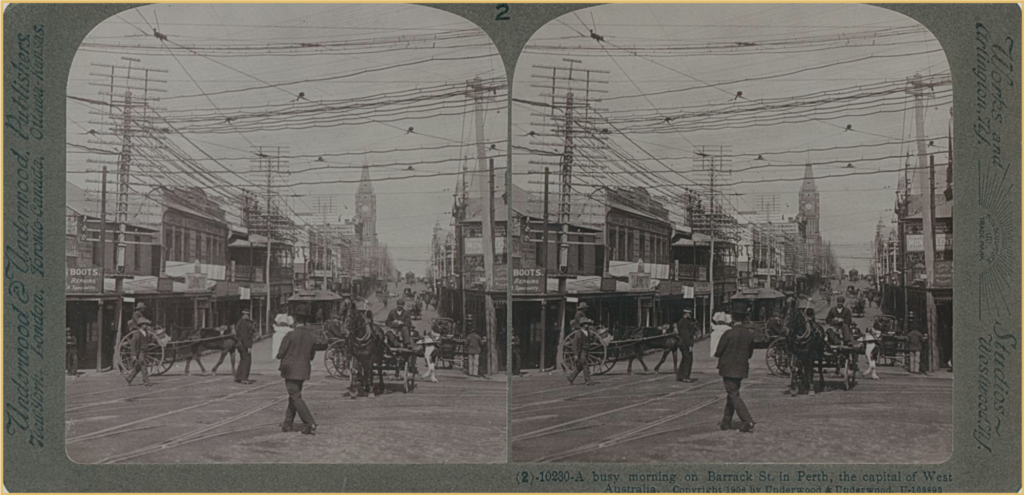
Africa.
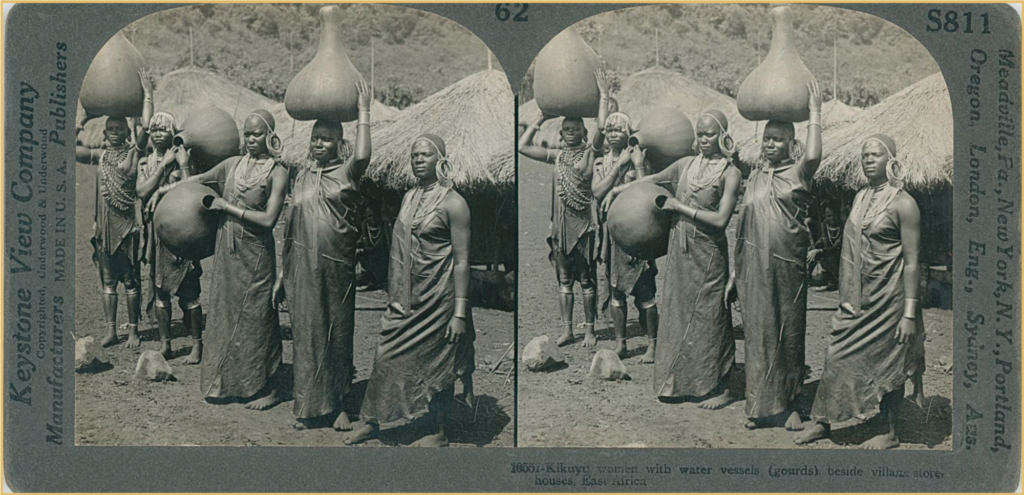
Other sets are country specific like:
The United States,
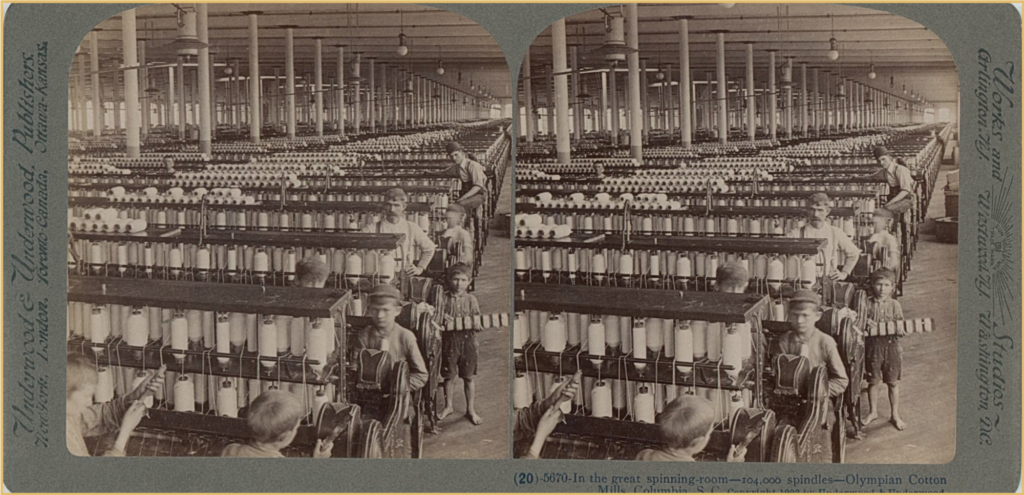
Canada,
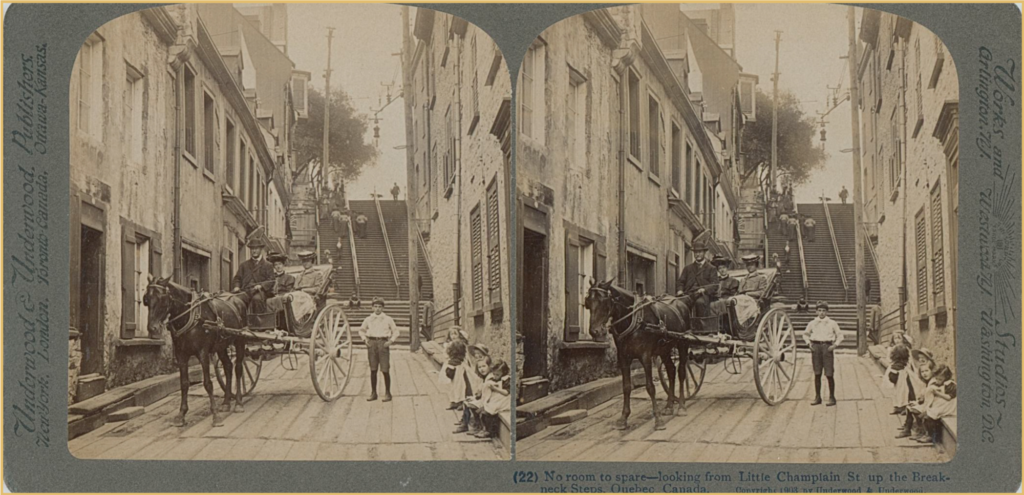
Ireland,
France,
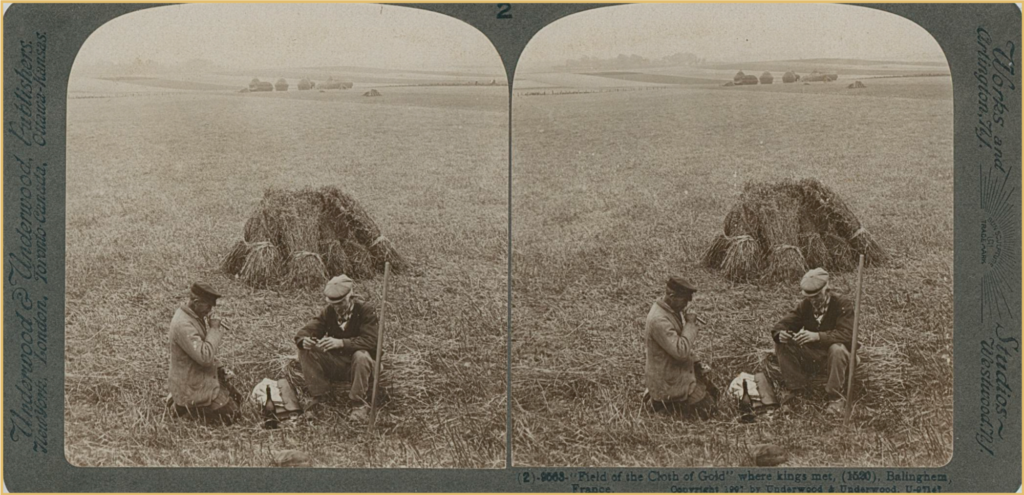
Germany,
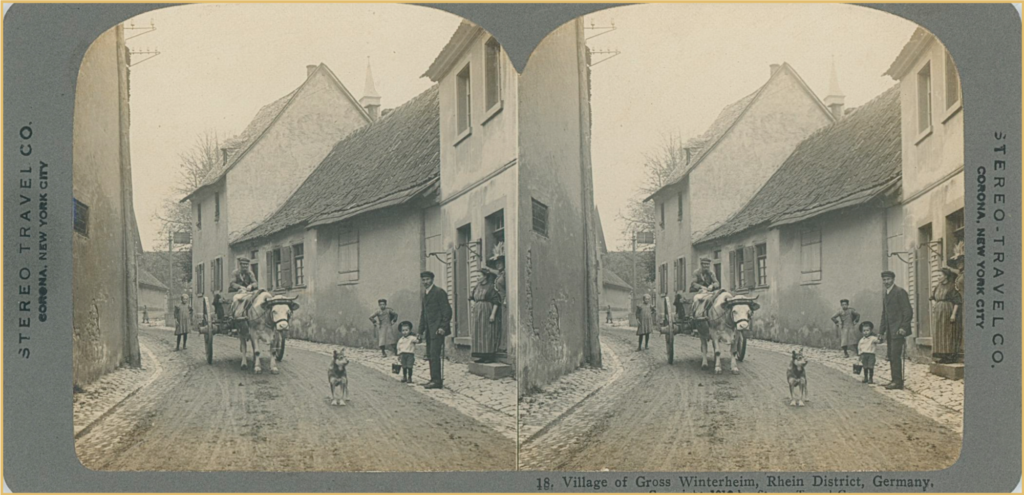
Norway,
Russia,
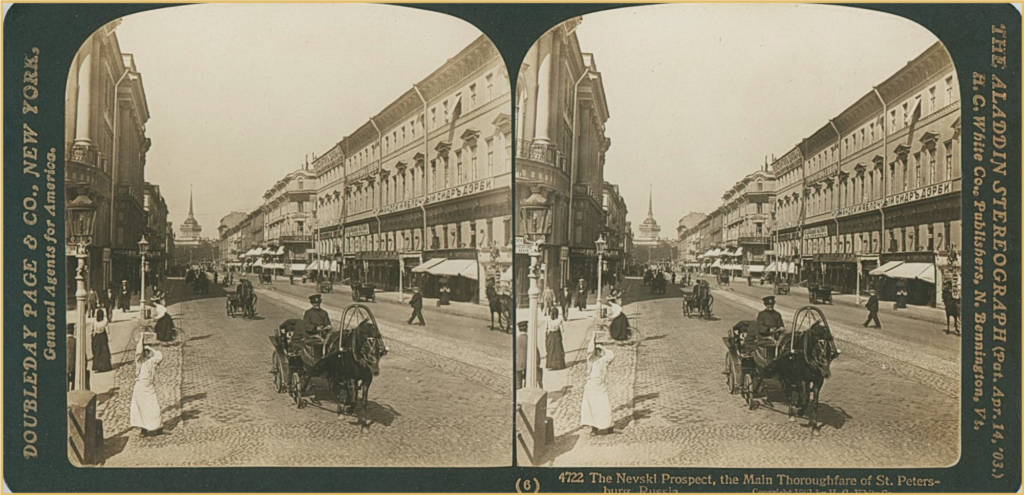
Italy,
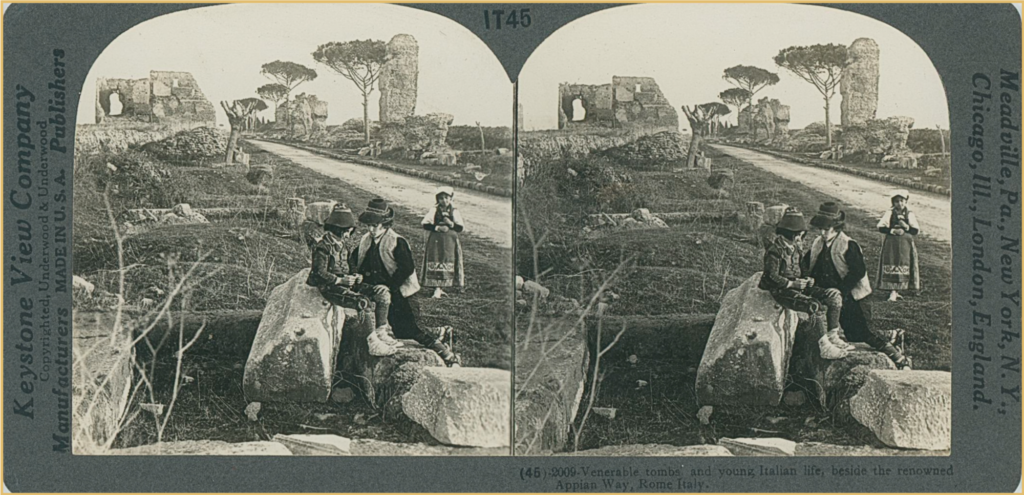
Egypt,
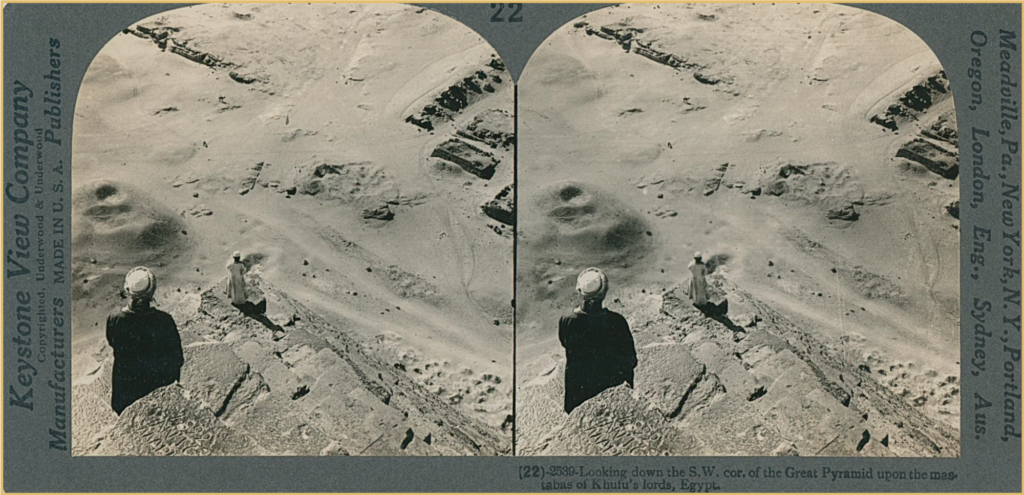
Burma,
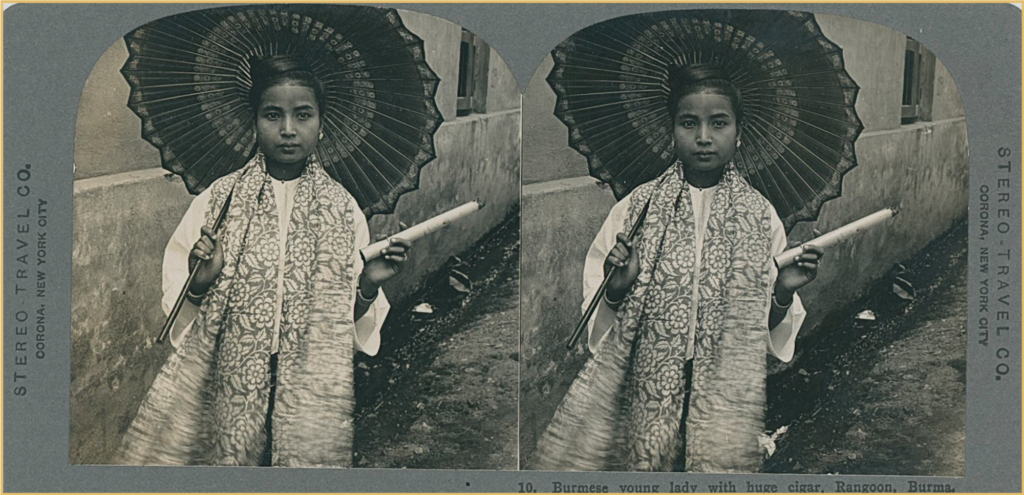
Japan.
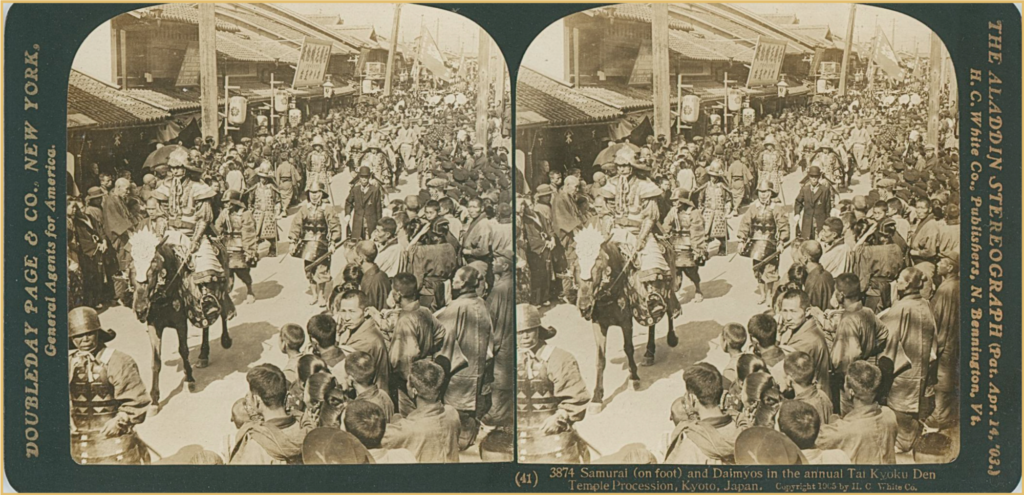
Subsets
Other sets have subsets like the Jaffa to Jerusalem subset of the Palestine set, …
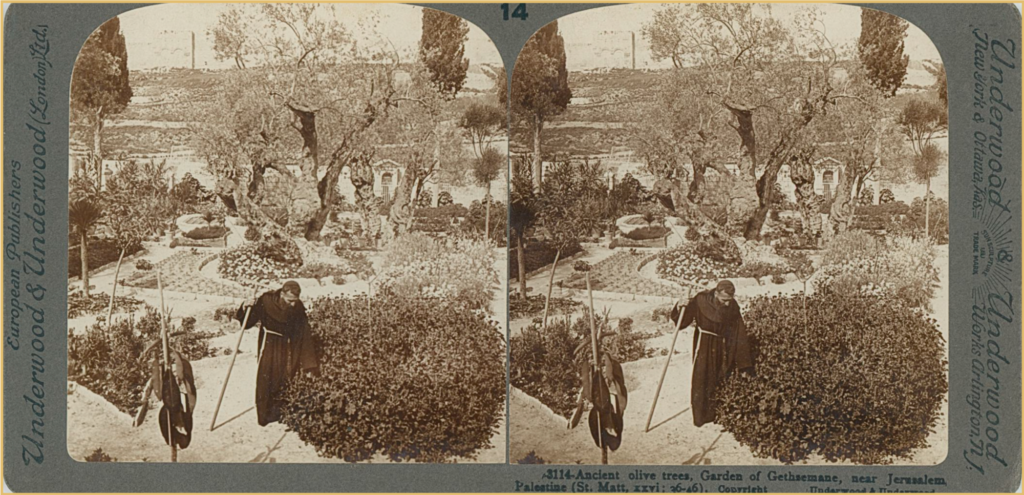
…the Berne and the Bernese Alps subset of the Switzerland set…
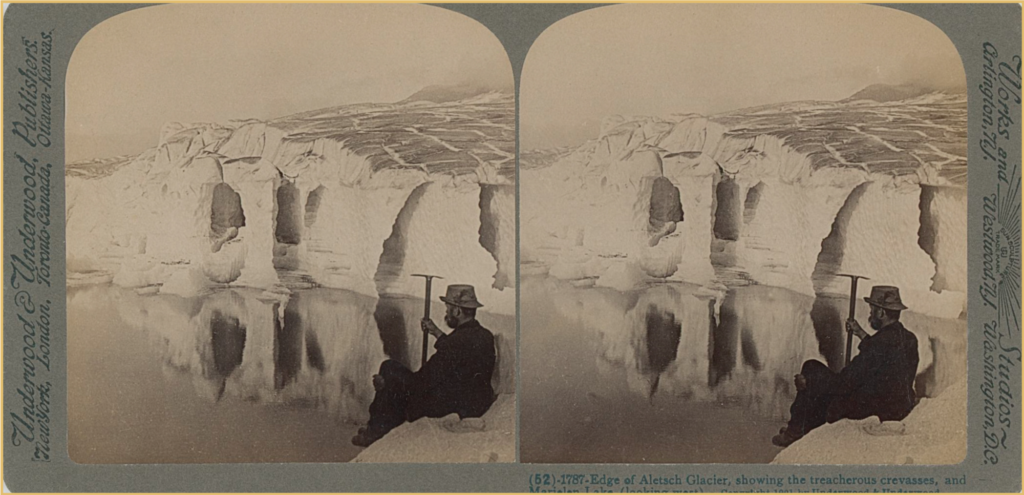
…or one of my newest acquisitions the Bombay to Cashmere subset of the India set.
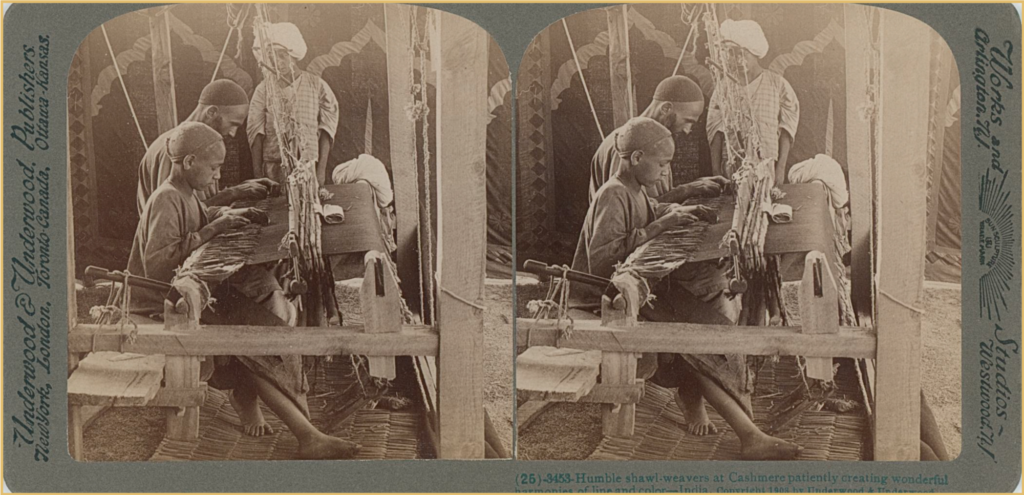
Themes and sites
I have other box sets that are thematic and site specific. This one is about Real children in many lands.
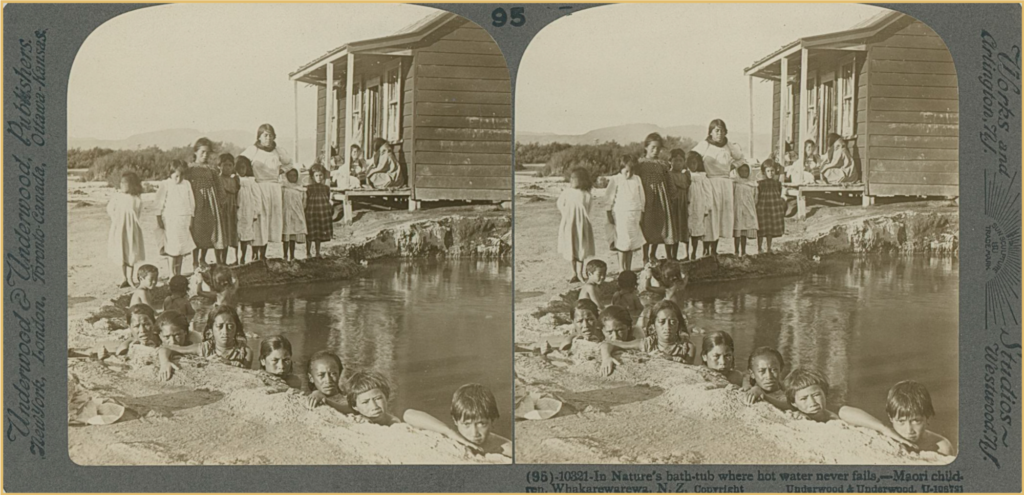
This set is about Niagara Falls (notice that this card was hand tinted and is not black and white).
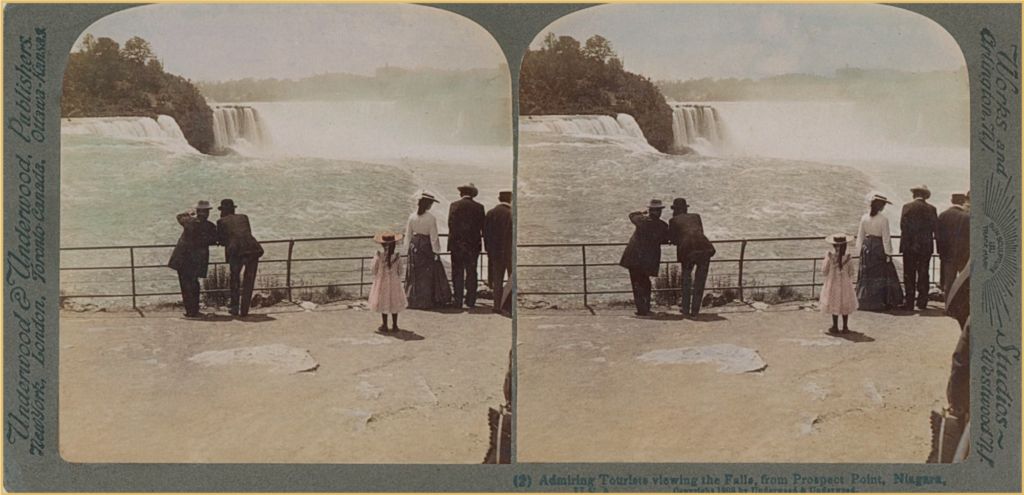
The Cowboys box set shows cowboys at work, cowboys doing entertainment and cowboys in rodeos.
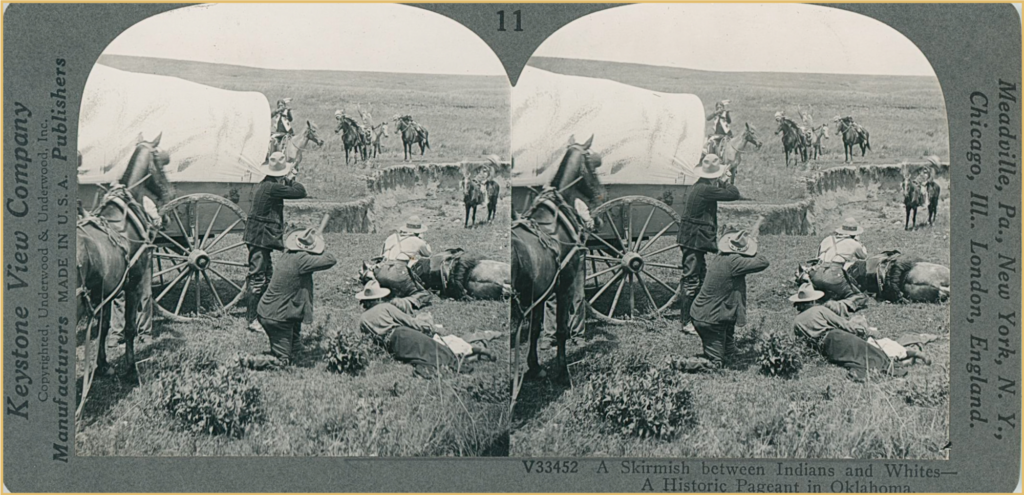
This Famous English Cathedrals set shows them from both the outside and the inside.
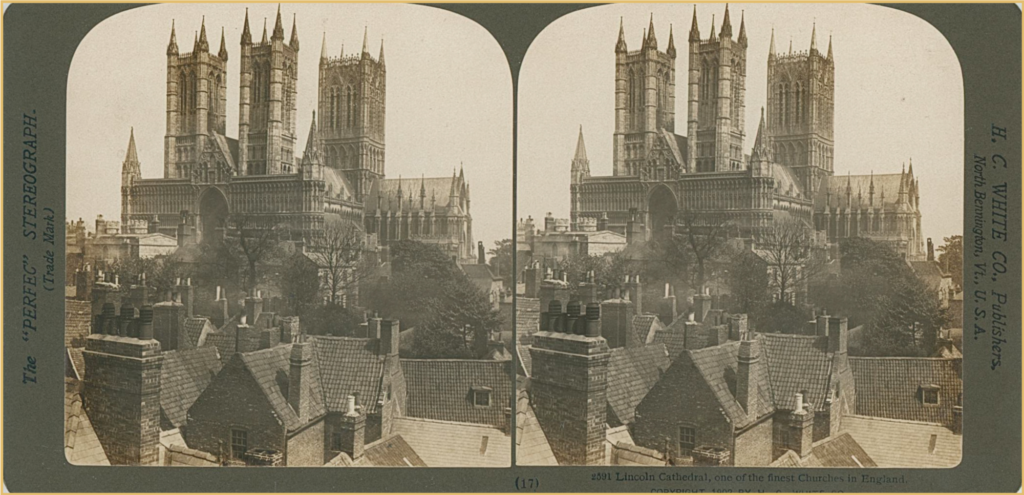
This box set about Birds was one of the biggest surprises for me. Not only are the cards in this set hand tinted but much to my surprise they are living birds not preserved models.
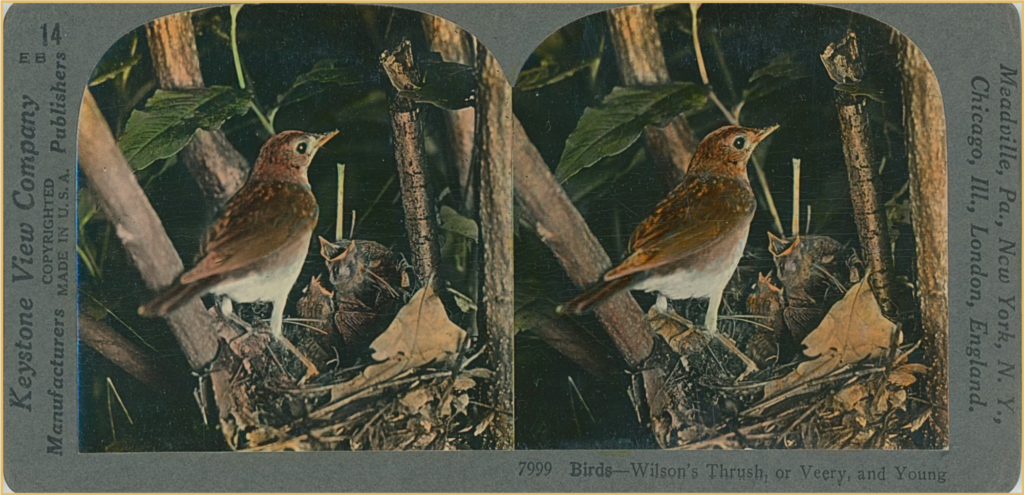
I think this Geometry set shows the greater clarity that viewing things in 3D can bring.
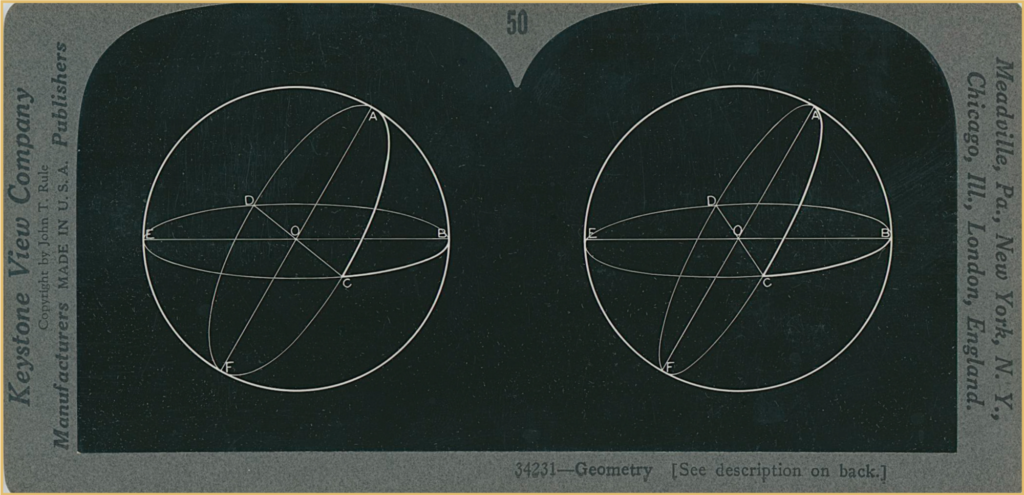
Conclusion
I am fascinated by how these different publishers chose to portray each of these places and the resulting mental portrait these images and words created for their viewers. But, they prompt questions for me, too.
Why did the photographer go to certain places? Why did the photographer choose to photograph what he did? Why did he think there would be an audience who would want to see those specific places and find them interesting? What do these choices say about the photographer, the viewing audience, their values etc.? What agenda existed for this whole thing beyond giving a tour of foreign places (for example, did they reinforce a cultural superiority)? What did the people in these images think of this foreigner amongst them? Were they curious? Antagonistic?
And the photographers who traveled the world to bring us these remarkable images are essentially anonymous — their names unknown.
They traveled to places where they almost surely didn’t know the language and customs. Possessing a limited amount of photographic glass plates they were entrusted with capturing the essence of each place, a single image at a time, to a viewing audience who might spend their entire lives in the town of their birth.
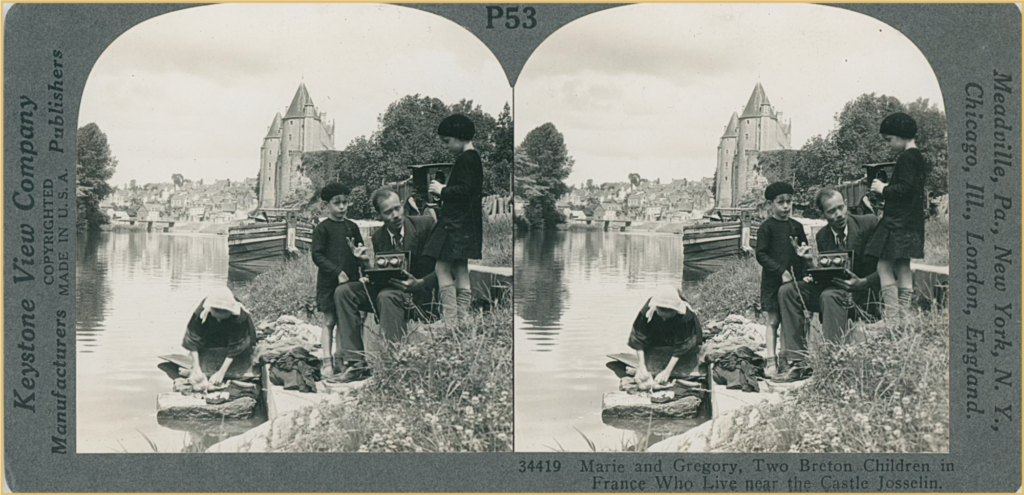
The danger these anonymous photographers were willing to put themselves in to get a compelling image was sometimes obvious:
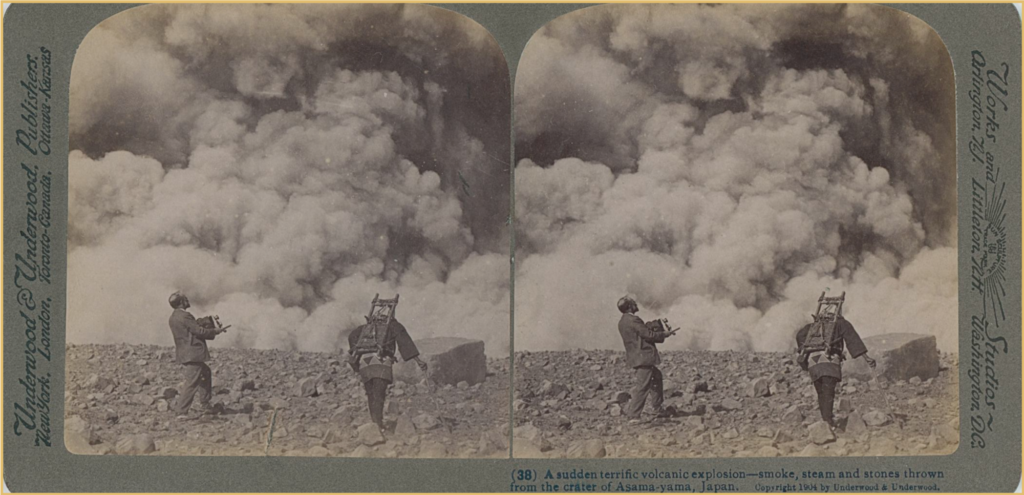
Other images seem uneventful but the seeming quiet masks the perilousness of the situation for the photographer.
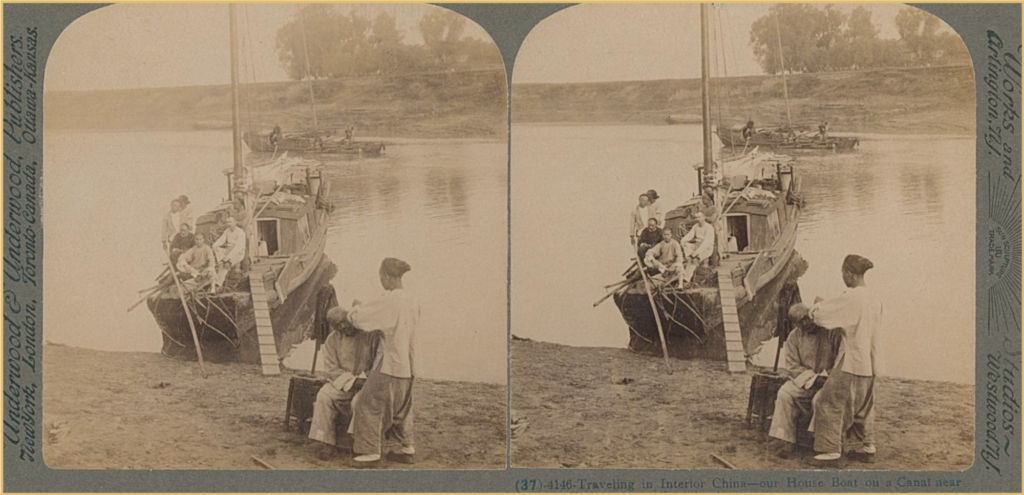
After spending a year in the Philippines photographing the Spanish-American War James Ricalton, the Underwood photographer, traveled to China in 1900 when the anti-foreigner Boxer Rebellion broke out. He photographed throughout China for a year. Many of the images document the ravages of war and the fear felt by European refugees escaping anti-foreigner attacks. Undeterred, Ricalton traveled by small boat into China’s interior. At one stopping point he describes the harrowing experience of being unable to take the image he intended because a mob of the local population gathered and began attacking him and his traveling companions. They were forced to hurriedly retreat to their boat as the crowd threw mud and lumps of clay at them. Ricalton and his comrades were grateful that there were no rocks at hand for the crowd to throw at them. Once safely back at their boat they got their guns and frightened the crowd back. Then Ricalton gave his gun to a colleague, and marched back with his camera to where he had wanted to take the photo before the attack. He hurriedly took his photo. They then fled for their lives.
After all of our travels to the far corners of the world at the end of the day there’s still no place like home.
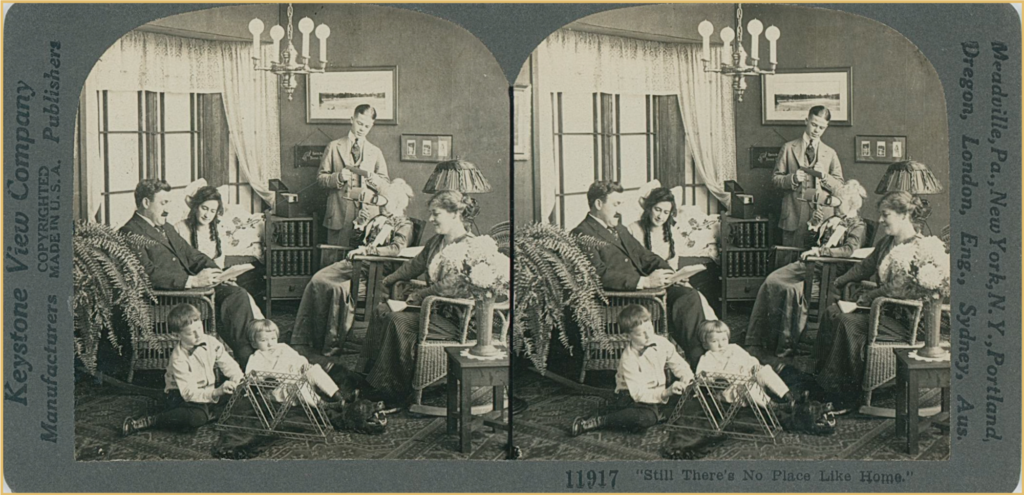
My modern adaption
For those of you who have seen my Instagram posts you know that many of my stereoimages are travel-related. I have also had several articles published in the International Stereoscopic Union’s journal Stereoscopy. My articles have a travelogue quality to them that resembles the text of the companion books for the box sets.
The reason why I photograph in 3D is the same as why I collect what I do and which inspires my 3D photography in turn.
I always envisioned creating my own stereocards and have at last begun to think my cards are coming closer to my creative aspirations for them.
This is the back of the card. The type of text I added to the back is intended to convey the sense of being there that I so admire in the companion books of the box sets.
I have always wanted to include a map with very precise GPS coordinates for the depicted image. It came from my frustration of trying to find places listed in guidebooks. You can see this carried through in my inclusion of a map of where I took the photo and GPS coordinates on the back of my card. If you type the coordinates into a mapping app (especially in Satellite mode) you will see exactly where I took the photo.
Andrew Lauren (Hicksville, New York, USA)
My love for photography began in my early teens. I can remember going with my Dad to Manhattan and buying my first camera. His advice that day stuck with me and became a broader life lesson. He said I should buy a camera I could “grow into” even if it meant spending slightly more than I had planned. I bought a Canon AE1. With that camera I became an award-winning Photography Editor for my high school newspaper — its first. I used that film camera until I was compelled to buy a digital one because I could no longer find a battery to buy for it!
My path to becoming a stereophotographer comes from that 2D photography background. In that regard, my path seems atypical as it did not begin with View-Masters or Brian May’s London Stereoscopic Company or through a stereocamera. On a basic level I think of myself as a visual storyteller who uses stereo photography, with the skills and patience I developed as a 2D film photographer.
Instagram-profile: andrew_lauren_6

